Windows
1. Prerequisite
Depending on your OS, you will need to download and install a few tools.
2. Get examples
To get started, you should clone the Ultimaille examples. Right-click in the folder where you wish to clone the repository, select Open Git Bash here.
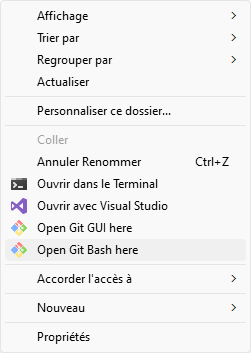
Then type the following command (trick: copy as usual by Ctrl^c, but click middle button to paste in the git bash windows):
git clone https://github.com/ultimaille/ultimaille-examples.git
3. Build and run examples
-
Open CMake GUI and configure like this:
- "where is the source code": set the folder where you have cloned ultimaille-example + "/ultimaille-example"
- "where to build the binaries": set the folder where you have cloned ultimaille-example + "/ultimaille-example/build"
Warning
Using these folders is required for the examples to find their assets.
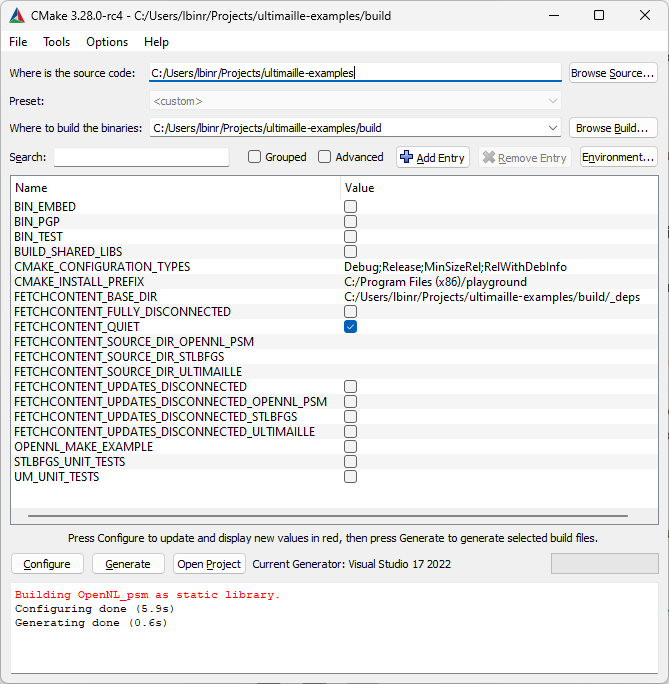
- Click Configure
- CMake will asks you to create the build folder, click on Yes
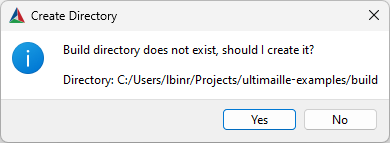
- CMake will asks you to specify generator, just click Finish
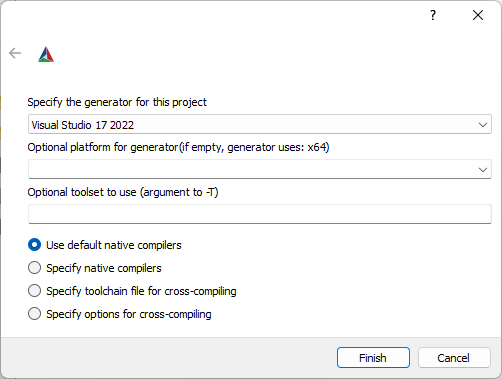
-
Next, in CMake main interface, click on Generate, Open Project
-
In the VS C++ solution explorer, right click on project
create_tri_meshand select Set as Startup Project
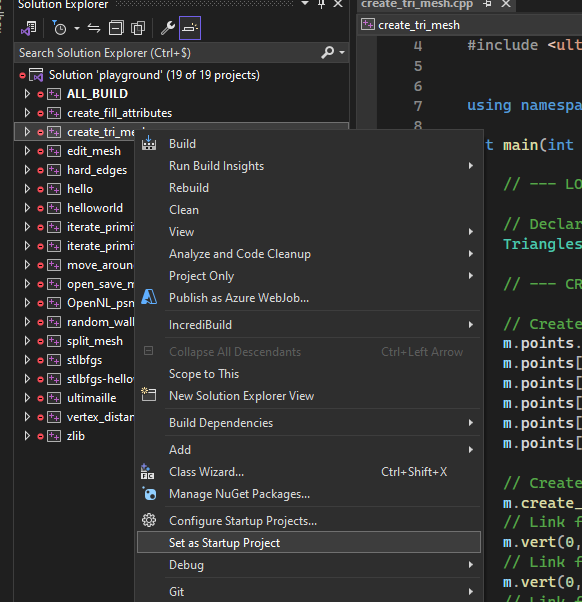
- Run
create_tri_mesh.exein VS with Ctrl+F5
That's it, you should see a simple triangular surface displayed in the Graphite viewer.
What does the example do ?
Git / CMake
- Git clone is used to copy ultimaille-examples in your local computer
- CMake configure the environment, it downloads Ultimaille library, Graphite viewer and put them at the right place in the
builddirectory - CMake then generate Visual Studio solution and projects, which will then be used for compilation
Code
- The code use Ultimaille library to create a triangle surface composed by 5 points and 3 facets (3 triangles) and write the mesh in a file named
tri_mesh.geogram - Then, system is called to execute Graphite viewer - which was previously automatically downloaded and unzip by CMake in the
builddirectory ofultimaille-examples- and open the generated mesh.
Note
You can find an in-depth description of the examples in the How to section.
What's next
Edit create_tri_mesh.cpp using How to ? pages to experiment other features.